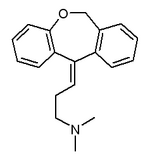INTRODUCTION: Ochroconis gallopavum (formerly Dactylaria gallopava) is a dematiaceous fungi which is an increasingly prevalent opportunistic infection in the immunosuppressed population. However, few reports exist of infections in immunocompetent hosts. We report the treatment of O. gallopavum infection in an immunocompetent host with voriconazole.
CASE PRESENTATION: This is a 79 year old Caucasian female who presents for evaluation of a two year history of shortness of breath. Patient's initial symptoms were breathlessness with exertion, however her dyspnea had progressed over 3 months prior to evaluation to being able to climb only a single flight of stairs. She notes morning cough with chronic production of thick yellow, sputum. Review of symptoms is notable for fatigue, low grade levers, and intermittent night sweats. Past medical history includes hypothyroidism, basal cell skin cancer, and a remote history of melanoma. Medications are synthroid, aspirin, and doxepin. There was a family history of melanoma. Patient was a life-long nonsmoker although she had significant exposure to second-hand smoke. She had lived in Florida, but currently lives in North Carolina. She had worked as a clerk in a drugstore and at a cigarette manufacturer on the production line. She denied significant exposure to dust or toxins, and had not traveled recently. Physical exam revealed bilateral inspiratory crackles at the lung bases. There was no adenopathy present. Ambulatory oximetry and pulmonary function testing was normal. Chest x-ray revealed interstitial prominence in the left mid, and lower lung fields. Computed tomography of the chest revealed 2-3 mm nodules, ground-glass, and bronchiectasis in the right middle, and left lower lobes (fig. 1). The patient was taken for bronchoscopy which showed mild inflammation on transbronchial biopsies and late growth of O. gallopavum and Aspergillus versicolor. Computed tomography of the head to rule-out cerebral involvement was negative and patient was started on voriconazole therapy, an advanced generation antifungal with activity against most dematiacious fungi, Aspergillus species, Fusarium species and yeasts. Patient showed remarkable improvement in her symptoms of dyspnea, cough, sputum production, and fevers. Her exercise tolerance had improved to three fights of stairs within the first month of therapy, and repeat CT of the chest showed resolution of the nodules and ground-glass opacities (fig 2). The patient completed four months of anti-fungal therapy with resolution of her symptoms.
[FIGURES 1-2 OMITTED]
DISCUSSIONS: Ochroconis gallopavum is a member of the dematiaceous hyphomycetes which are best known in the veterinary literature as a cause of epidemic avian encephalitis (1). Reports of human infections have been primarily limited to immunocompromised hosts with history of solid organ transplantation or hematologic malignancy. Standard treatment of systemic infections with dematiaceous molds involves surgical resection in combination with antifungal agents (1). Two previous reports have described infections in immunocompetent hosts, both of whom had either predisposing environmental exposure or concomitant infection with structural lung disease (2,3). Our patient had no history of environmental exposure or predisposing infections. She rapidly improved with oral therapy and made a clinical recovery with radiographic resolution in 4 months time.
CONCLUSION: Ochroconis gallopavum is a rare infection in immunocompetent patients. We report a case of pulmonary infection in a patient with no predisposing factors who had a rapid and complete response to oral antifungal agents.
REFERENCES:
(1) Kralovic, S and Rhodes, J. Phaeohyphomycosis caused by dactylaria (human dactylariosis): report of a case with review of the literature. J. Infec, 1995. 31:17.107-113
(2) Odell, J., et al. Multiple lung abscesses due to ochroconis gallopavum, a dematiaceous fungus, in a nonimmunocompromised wood pulp worker. Chest, 2000. 118: p. 1503-1505.
(3) Bravo, L, et al. Ochroconis gallopavum and mycobacterium avium intracellulare in an immunocompetent patient. Chest, 2004. 126: p. 975s.
DISCLOSURE: Scott Shofer, Grant monies (from sources other than industry) This work was supported by grants from the National Institute of Environmental Health Sciences (ES12717, ES11961) and the National Institute of Allergy and Infectious Disease (AI58161, AI65837); Other The voriconazole to treat the patient discussed in the presentation was provided by Pfizer.
Scott Shofer MD * Aimee Zaas MD John Hollingsworth MD Duke University Medical Center, Durham, NC
COPYRIGHT 2005 American College of Chest Physicians
COPYRIGHT 2005 Gale Group



